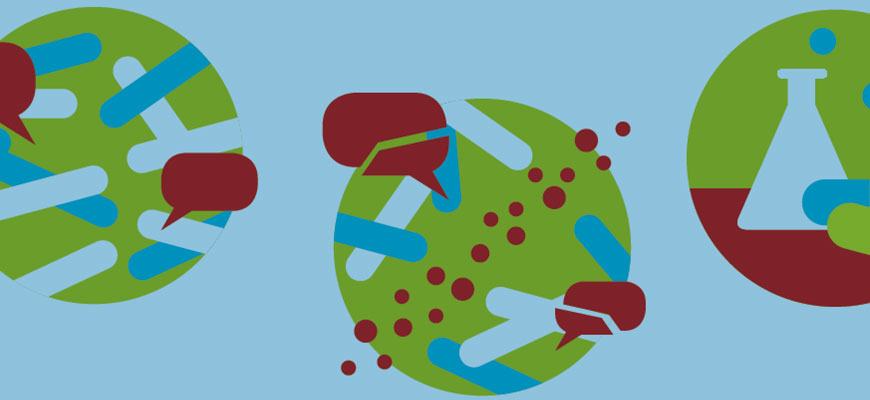
Microbial mashup
From tropical mats to life on Mars and human infections
Posted on: August 7, 2018; Updated on: August 7, 2018
By Chris Horn, chorn@sc.edu, 803-777-3687
Alan Decho’s research sometimes takes him to sunny islands in the tropics, but lest you feel envious, you should know that the environmental health sciences professor is there to study thick, slimy mats of bacteria that survive in extreme heat and drought.
Turns out, the conditions those hardy bacterial colonies call home might provide clues in the search for life on other planets, and Decho is leading a team of scientists from universities in Scotland and Hawaii and the Lawrence Livermore National Laboratory in California to help NASA explore that topic.
The Scottish researchers have access to NASA’s Mars Environmental Chamber, which mimics atmospheric and other extreme conditions on Mars. The University of Hawaii scientists are sampling bacteria found in lava caves near volcanoes, while Decho gathers samples from salt ponds in the Bahamas.
"These are thought to be conditions similar to those where life may presently exist on Mars or may have existed in the past,” says Decho, who also is associate dean for research in the Arnold School of Public Health. “In such places, microbial life periodically dries up and is dormant when exposed to high salt, heat and UV irradiation, yet awakens when rains come and is suddenly abundant and flourishing. We are tasked with not just understanding how microbial life survives, but how it thrives under these extremely harsh conditions.”
Decho’s bacterial research also has plenty of applications here on Earth, including novel treatments for infection and new sources of antibiotics.
"We found that in nature and in humans there is a lot of chemical communication going on with bacteria,” says Decho, one of about a dozen Carolina faculty members who are conducting research related to antibiotics. “That communication is called quorum sensing, and it happens when bacteria are getting organized. You might not even know you have an infection for a while, and then, suddenly, you’re sick. You were asymptomatic while the bacteria were getting organized. If you can control quorum sensing, an infection isn’t so strong anymore.”
Decho likens quorum sensing to telephone lines that allow individuals to connect and coordinate their actions. Disrupting their communication transforms an organized group into a bunch of individuals unable to work together. His team, which includes researchers from the Department of Chemistry and Biochemistry and the School of Medicine, is exploring ways to jam the communication chemical signals of bacteria by inserting nanoparticles that soak up the communication chemicals or send signals that confuse the bacteria.
"We’ve experimented with silver nanoparticles, but that’s a very toxic metal,” Decho says. “We’re trying to make less toxic particles that could target specific processes in the body.”
Decho’s early research on bacteria focused exclusively on biofilms in ocean environments, particularly the slimy deposits that accumulate on the hulls of ocean-going vessels. Over time, he realized the commonality of biofilms in the ocean and those of the human body and their role in regulating infection. Decho points to the tropical biomats he studies in the Bahamas as potential treasure troves of natural products with biologically active agents, including antibiotics.
"They produce lots of novel antibiotic compounds to inhibit other nearby colonies of bacteria,” Decho says. “These are molecules that chemists couldn’t dream of synthesizing, some even with anti-cancer properties as well."
This type of research, says Decho, also offers tremendous opportunity for ambitious students who are interested in laboratory and health-related sciences for a career. Such research is not easy, he says, but if successful, will drive positive solutions to combat resistant infections at the local and societal level and offer potentially far-reaching impacts on global health.
Share this Story! Let friends in your social network know what you are reading about